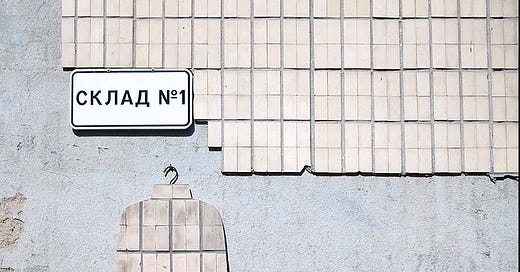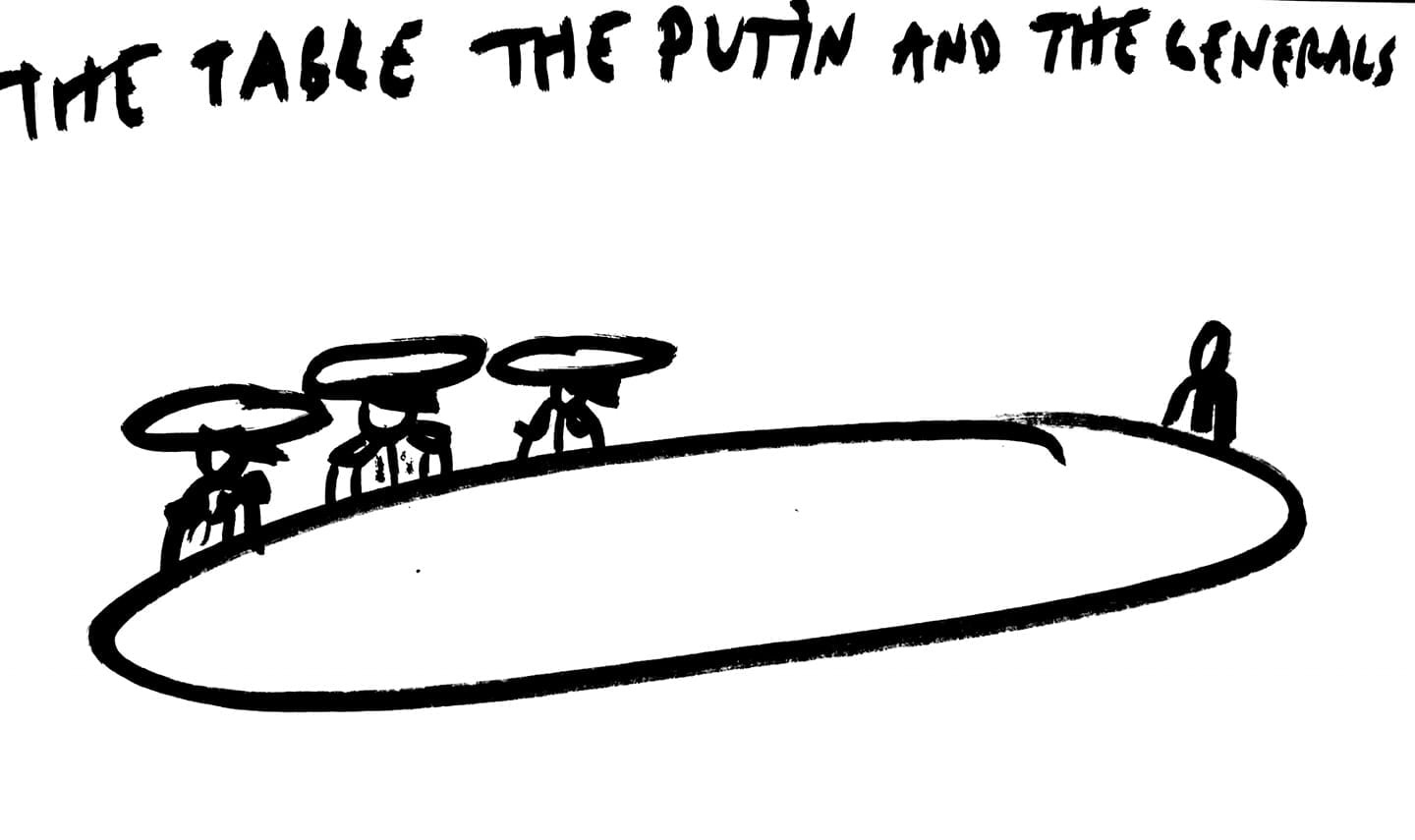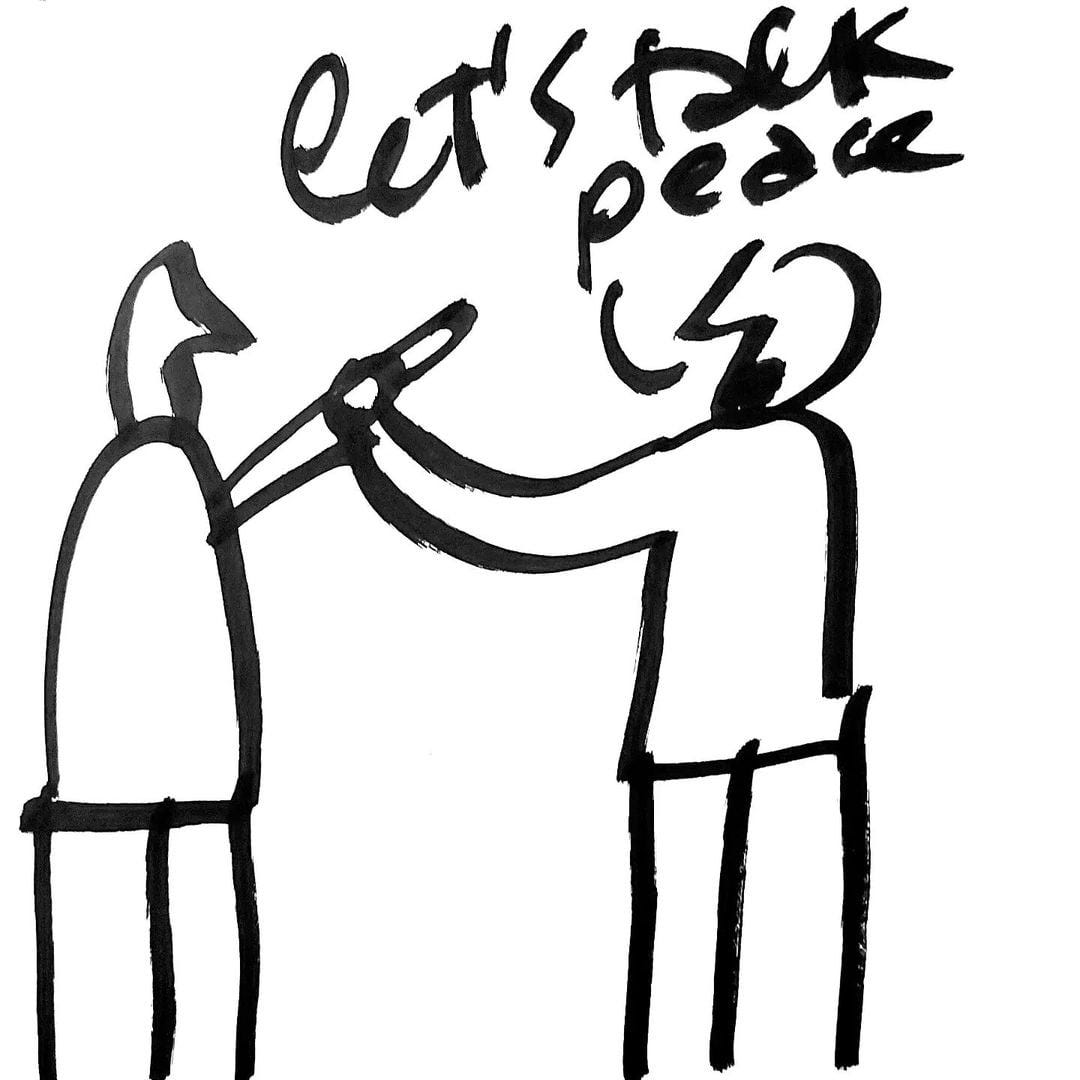Zhanna Kadyrova, Second Hand, SRZ, Odessa, Ukraine. 2020
Two days after the 9/11 attack on the World Trade Center I spoke on the phone with an artist friend of mine. He asked how I was doing, and I remember telling him that I felt paralyzed: I was in shock about what had just happened and was, like most of us then, overwhelmed with sorrow. I added that making art at that moment felt pointless. “On the contrary”, he replied, “I think that artists are going to make great artworks about this.”
I want to believe that he did not mean his comment in an opportunistic way. There is an implicit belief out there that “artists help the world by revealing mystic truths”, (Bruce Nauman dixit). But artists are not oracles nor mystics, and art seldom can double as journalism. Yet the natural impulse that we have in the art world to hear from artists remains: our hopes, perhaps, is to hear what they have to say, perhaps to shed light on a confusing moment.
That was my sincere instinct this week when I reached out to Zhanna Kadyrova, a Ukrainian artist based in Kyiv. Kadyrova has become known in Europe and in the US for her sculpture, particularly for the making of works that somehow blend the material of construction tiles with second-hand store dress items.
Zhanna Kadyrova, Second Hand, The Kiev Film Copy Factory, 2017
This past Monday when I spoke with Zhanna, she was with her boyfriend and her mother at a house in the geographic center of Kyiv, an area named Rusanivkiy Sady, in the left bank of river Dnipro. Right before the attack on the city started, she was planning to go to a residency in the south of France but was unable to leave — at the moment there are no flights in or out of Kyiv. “It is forbidden to go outside”, she said, and while a few shops were open that day, “supermarkets are now empty shells”. They spend nights sleeping in a small basement where the three of them can barely fit.
A lot of the information that she shared confirms what we have heard in news reports: the city of Karkhiv has suffered terrible destruction. Kindergartens have been shelled. Several fighters in the Russian army are Chechen, and the majority are poorly trained “while our soldiers have fought through two revolutions”, she said. Many of her artist friends have taken arms and have joined the war. She is posting updates and videos on Facebook.
Two days ago she sent me the following account which I reproduce here:
All these days, Ukrainians have been fighting against Russia that invaded our peaceful cities. The struggle involves not only the army, but the civilians, too. Unarmed people come out to stop the tanks, thousands of people voluntarily go to the territorial defense troops to protect their homes and families from the enemy. We hold the cities. Not one gave up.
Unfortunately, in many places of the country, there are now battles. Among the big cities, Kharkiv suffered the most. Mariupol and Kherson are being bombed as well. Smaller towns in Eastern Ukraine like Kahovka and Sartana are constantly under shelling; there are huge losses among the civilians. Volnovakha has been almost wiped off the face of the earth, people can’t even evacuate and literally live in the basements without food and water. It’s hard to tell now how many of them are still alive.
Today, the main Kyiv TV tower was shelled, and 5 people were killed and 5 received heavy injuries. Among them was a family with children. They all died close together.
Two-thirds of the population have left Kyiv, but the rest cannot get out, many simply have nowhere to go and it's scary to be on the road - many bridges are mined, and the shelling doesn’t stop for long. Ukrzaliznytsia continues to work and several trains a day take people to Lviv, Chop, and other cities on the west free of charge.
Public transport in the capital operates when there is no curfew but with heavy delays and within limited range. Taxi services work free of charge for the needs of the army. Restaurants distribute food. Network confectionery Vatsak in Rubizhne, near the ATO zone, handed out cakes for free. People support each other and fearlessly fight. No one is ready to surrender to enemies - there are more queues to the military registration and enlistment offices than to supermarkets. Everyone is ready to defend their country.
Young guys on Obolon, the right bank of Kyiv, stopped a Russian tank - literally with a piece of asphalt. We have many stories of amazing courage. We want stories of calmness or silence. For these, 9 children were born in shelters, on the first day of one of them - right in the subway. We hope they will see our country peaceful and protected. We met the first day of spring in a terrible atmosphere, but with amazing Ukrainian people and with the support of the whole world.
Zhanna’s account over the phone was harrowing. I asked her what her immediate plans were now. Her response was: “I can’t think of the future right now. I am living day by day. I don’t even know if I tomorrow I will wake up alive.”
As I was reflecting on the difficulty of responding to historic events from the standpoint of the artistic practice, I have been admiring Dan Perjovschi’s stinging responses to the Russian invasion of Ukraine, ridiculing Putin’s Napoleonic arrogance and the brutality of the Russian army’s attack.
Perjovschi, who has worked in magazines and is aptly fluent in social media, also works in a medium of immediacy (cartooning) that allows him to respond immediately to political events, pretty much as political cartooning does. It is not, however, the rule that art can respond quickly to traumatic, tragic events.
I contacted Perjovschi to inquire a bit more about his working process. Primarily, I asked him, what motivates him? This is what he told me:
When the Communist Dictatorship fell in Romania and we got freedom of expression, my first move as an artist was not the galleries (they were bad and had bad art) but to the newspapers. The bonanza and euphoria of printed uncensored words was enormous. I associated myself with that. I do drawings about my political, social and cultural context since 1990. Weekly. somewhere between 1995-1999 what I published in newspapers and what I drew on the walls of museums became one. And when my artistic career took off my context became global. I constantly draw about the world I live. And when social media came along, I simply use it as a platform for a global audience. All my arts projects all my media and social media presence can be summarized in a simple elementary thing. I translate what is going on into a simple text (word) or image. I draw it as I understand it... But sometime around 2010 when in Romania the society response to politics become visible (marches, protests) I found a place for me, the artist bigger than the art scene. I become a drawing provider. If they need a drawing against cutting forests here I am; I do it I post on Facebook, they download it and stick it to their protest placard... I participate to all great civil society movements in my country and not only, but not physically but trough my drawings.
And now I feel it as a responsibility. Call me naive but I truly believe I can change the world....
And now with Ukraine is personal, we are here. We are right here... and I never saw until now so much involvement from simple citizens to NGO’s, church, the State... I try to contribute and show some solidarity.
The instinctual and remarkable response of artists like Perjovschi helps underscore the fact that art generally can’t respond to historic events in real time, Guernica-style. And yet this ability is hugely important in this moment where a war is being fought not only on the ground but also in the media. Looking at the social media in Latin America, for example, I can see how many people are already parroting the lines created by the Russian propaganda news service, which is available in Spanish, citing completely wrong historic facts about Ukraine and its political and social history.
So, the larger question is how artists can engage that war of images and disinformation. For the time being, some Ukranian artists, like Zhanna’s friends in Kiev, are taking the path of other European artists of the 20th century —Schiele, Kirchner, Boccioni and others— who simply laid down their brushes and went to war.
Zhanna Kadyrova, Volatility, 2019, Carpathian Mountains, Ukraine








I’m a female artist too and my parents lived through the Russian occupation in former Czechoslovakia. As we watch the news about Ukraine we both cry (especially my mom) we have friends that live there and can’t get out. I’m posting on my Instagram as an artist sharing my empathy to people. We are connected to the Ukranian community here in Florida doing our best to help in any way we can. God Bless🌻🙏🏼❤️🇺🇦